System Builder Marathon: The $4,500 Super PC
Benchmark Results: 3D Games

Crysis
Crysis was a little too choppy at our panel’s 2560x1600 native resolution, but overclocking made it smooth enough for some players. Enabling anti-aliasing again caused excessive choppiness even for the overclocked configuration, but it’s really hard to see aliasing at 2560x1600. Our choice would be to use the overclocked configuration at 1920x1200 pixels, with anti-aliasing enabled.
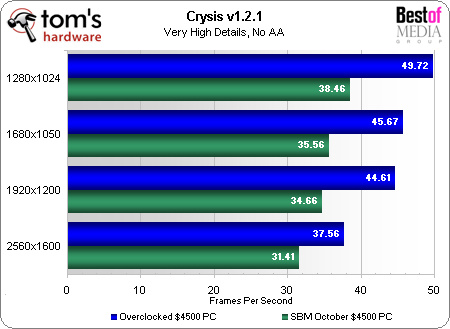
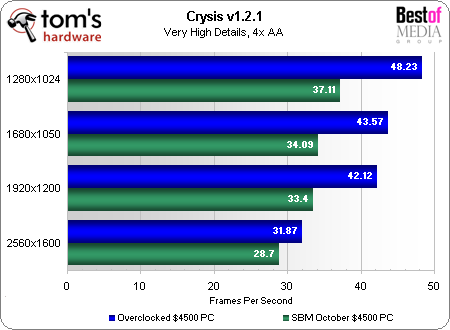
Supreme Commander
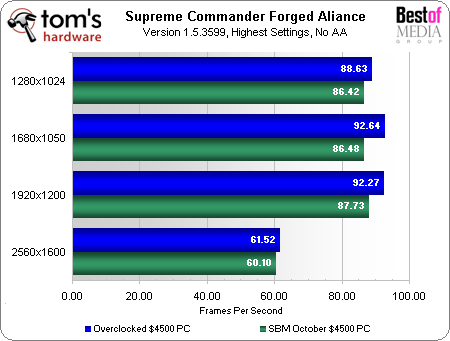
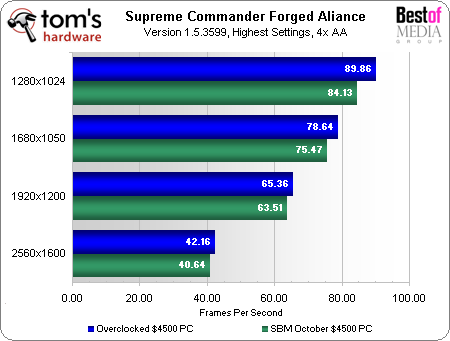
Without anti-aliasing, Supreme Commander appears to be CPU-limited until one considers how small the difference is between the base speed and overclocked configurations. Perhaps it’s limited by memory bandwidth instead? Enabling anti-aliasing revealed the limitations of our graphics cards, but the game was playable at all settings.
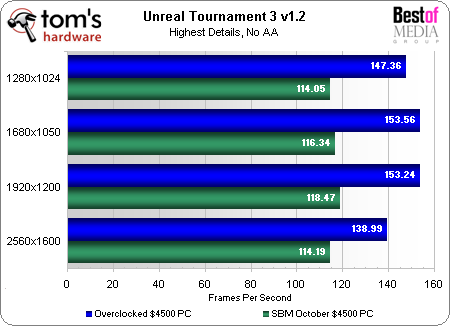
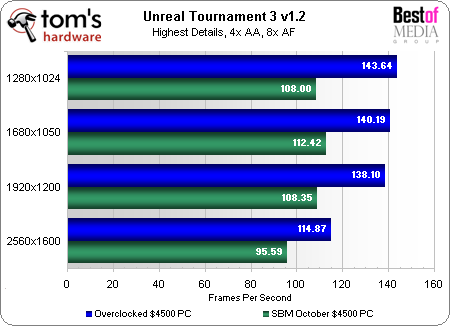
Unreal Tournament 3 shows a more realistic CPU-limited performance curve at its highest normal settings. For this particular game, anti-aliasing and anisotropic filtering must be forced through drivers, and doing so reveals the limits of our graphics cards. Forcing anisotropic filtering really "wakes up" the visual presentation of this game, and we achieved a superb 115 frames-per-second at our 30" flat panel display’s native resolution.

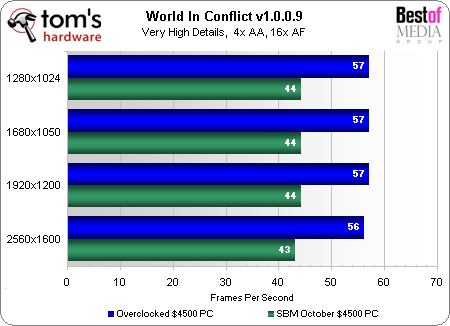
World in Conflict also appears to be CPU-limited, but a minimum of 43 frames per second at stock system speed doesn’t appear to be much of a hindrance. The game supports AA and AF adjustments, though a missing 8x AF setting caused us to choose 16x instead.
Current page: Benchmark Results: 3D Games
Prev Page Benchmark Settings Next Page Benchmark Results: Encoding and other ApplicationsGet Tom's Hardware's best news and in-depth reviews, straight to your inbox.
